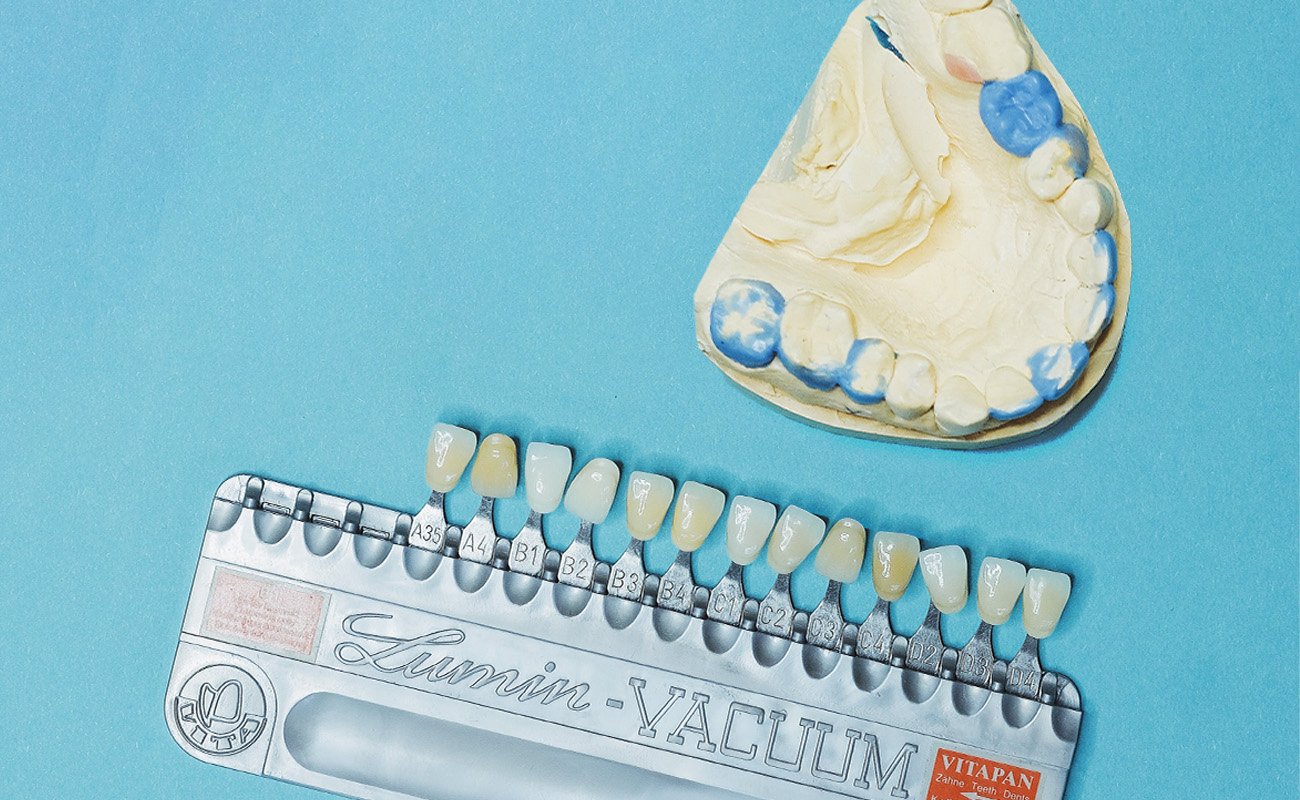Crossbites can lead to oral health issues if not corrected. Some may wonder if veneers can resolve crossbite problems. In this article, we’ll examine what crossbites are, their different classifications, causes, and impacts on dental health. We’ll discuss the limitations of veneers, as they only address cosmetic appearance, and will overview other orthodontic treatments better suited for properly correcting crossbites and bite alignment, including braces and surgery.
What Is Crossbite?
A crossbite is a dental misalignment where the upper teeth do not properly align with the lower teeth when the jaws are closed. This condition can affect both front and back teeth and may lead to various dental and functional issues.
Types of Crossbite
There are several types of crossbites based on their location and characteristics:
Anterior Crossbite: In an anterior crossbite, the misalignment occurs in the front teeth, particularly the upper and lower incisors. One or more upper front teeth sit behind the lower front teeth when the mouth is closed.
Posterior Crossbite: A posterior crossbite involves the back teeth, specifically the premolars or molars. In this type, the upper back teeth are positioned inside the lower back teeth when the jaws are closed. It can occur on one or both sides of the mouth.
Unilateral Crossbite: This type of crossbite affects only one side of the mouth. It can occur in the front (anterior) or back (posterior) of the mouth and may involve one or more teeth.
Bilateral Crossbite: A bilateral crossbite occurs on both sides of the mouth. In this case, both the upper and lower teeth on both sides do not align properly when the jaws are closed.
Worth Knowing
The article published in Angle Orthodontics states that children who are born prematurely have a higher risk of developing posterior crossbite compared to those born at full term.
Causes of Crossbite
A crossbite is a type of malocclusion or misalignment of teeth, and it can cause various dental issues if not addressed. Some of the common causes of crossbites include factors like genetics and childhood behaviors:
- Genetics: Crossbites can be hereditary, with a family history of dental misalignments increasing the likelihood of developing a crossbite.
- Thumb-Sucking or Pacifier Use: Prolonged thumb-sucking or pacifier use during childhood can disrupt normal tooth alignment, contributing to the development of a crossbite.
- Abnormal Jaw Growth: Irregular growth of the upper or lower jaw can lead to crossbites, as can a narrow upper jaw or a wide lower jaw.
- Missing Teeth: Gaps left by missing teeth can result in crossbites, as adjacent teeth may shift into the empty spaces.
Consequences of Untreated Crossbite
An untreated crossbite can lead to various dental complications:
- Uneven Tooth Wear: Crossbites can cause uneven wear on teeth due to misalignment, leading to potential tooth damage or sensitivity.
- Gum Recession: The pressure on the gums from misaligned teeth can lead to gum recession and increased susceptibility to gum disease.
- Jaw Discomfort: Crossbites can cause jaw pain, discomfort, and dysfunction, particularly when biting and chewing.
- Aesthetic Concerns: Crossbites can affect the appearance of the smile and facial symmetry.
- Impaired Speech: Severe crossbites can interfere with proper tongue and lip movement, leading to speech difficulties.
- Jaw Growth Issues: In children, untreated crossbites can affect normal jaw growth and development.
See also: All You Need To Know About Veneers – We Answer The Most Frequently Asked Questions
Can Veneers Fix Crossbite?
Now that we understand what a crossbite is and the issues it can cause, an important question arises – can veneers effectively correct a crossbite?
Veneers, thin shells of porcelain or composite resin, are primarily used to enhance the appearance of teeth by improving their color, shape, or size. However, veneers are not designed to address structural or alignment issues like crossbites. Crossbites involve the improper positioning of teeth and jaws, and correcting them typically requires orthodontic treatment such as braces or clear aligners, or in some cases, orthognathic (jaw) surgery to reposition the jawbones.
In some cases, however, veneers may be an option for improving the cosmetic aspects of teeth affected by a crossbite once the underlying alignment issues have been addressed through orthodontic or surgical means.
Pros of Using Veneers for Crossbite
Veneers offer a cosmetic solution for minor crossbites, as they can improve the appearance of misaligned teeth. They provide a fast treatment option compared to traditional orthodontics and require less extensive dental work. Moreover, veneers create a natural-looking, beautiful smile, boosting confidence and self-esteem for patients with crossbites.
See also: Veneers That Look Natural: Achieving a Seamless Smile in Dentistry
Other Treatment Options
While veneers have minimal ability to fix crossbites, other orthodontic treatments can successfully realign the jaw and teeth to correct this malocclusion. Let’s explore some of the effective options that provide long-term improvements to a problematic crossbite.
Metal Braces
Metal braces are a widely used and effective treatment option for correcting crossbites. They work by applying continuous pressure on misaligned teeth to gradually move them into their proper positions. Braces are especially effective for addressing various types of crossbites, whether they are anterior, posterior, unilateral, or bilateral. Orthodontists customize braces to each patient’s specific needs, making them a versatile solution for achieving proper dental alignment and improving both function and aesthetics. Treatment duration may vary based on the severity of the crossbite and individual response to orthodontic care.
Worth Knowing
The occurrence of posterior crossbite in children and adolescents varies geographically, with a prevalence of approximately 4% in Europe and 17% in America.
Lingual Braces
Lingual braces can be an effective treatment option for correcting crossbites. These braces are discreetly placed on the inner surfaces of the teeth, making them virtually invisible when smiling. They work similarly to traditional braces by applying controlled pressure to reposition misaligned teeth and correct crossbites.
Lingual braces are especially suitable for individuals who want the benefits of orthodontic treatment without the appearance of traditional braces. While they can effectively address various types of crossbites, treatment duration may vary based on the severity of the condition and individual needs.
Invisible Aligners
Invisible aligners, such as Invisalign, offer a discreet and effective solution for correcting crossbites. These clear, custom-made aligners apply gentle pressure on teeth to gradually reposition them. Treatment duration varies depending on the severity of the crossbite. Patients typically switch to a new set of aligners every few weeks, ensuring a consistent and gradual shift in their teeth alignment.
Explore these top invisible aligner options along with their reviews:
NewSmile – A low-cost option with premium aesthetics. This product comes with a free retainer and teeth whitening kit. See our review of NewSmile aligners.

NewSmile
Affordable at-home treatment with positive reviews offering superior look and comfort.
Check out NewSmile AlignersCandid – The most similar to Invisalign aligners with hybrid in-office care this product has great reviews from its customers. See our review of CandidPro aligners.

Candid
A hybrid of in-office and at-home treatment that provides 1-on-1 orthodontist support.
Check out Candid AlignersByte – The top pick, this aligner is affordable and comes with a HyperBite and teeth whitening kit. This product also has a lifetime guarantee. See our review of Byte aligners.

Byte
An affordable option with refundable impression kits, free HyperByte, and a Byte for Life guarantee.
Check out Byte AlignersALIGNERCO – The cheapest invisible aligner on offer with a zero deposit option on a monthly payment plan. They offer 24/7 live chat support should you have any questions about your aligner or treatment. See our review of AlignerCo aligners.

AlignerCo
The cheapest at-home aligners, with monthly plans, no down payment, and considerable discounts.
Check out AlignerCo AlignersExpanders
A palate expander is an oral device used to widen a narrow upper jaw. It may be recommended for individuals with a crossbite, overcrowded teeth, or other conditions. The duration of wearing a palate expander can vary depending on the patient’s age and the severity of the condition.
Jaw Surgery
Jaw surgery is an effective method for correcting severe cases of crossbite. It involves realigning the upper and lower jaw along with teeth to address the misalignment issue.
This procedure can significantly improve facial balance, relieve pain from temporomandibular joint disorder, and address other jaw complications. Post-surgical recovery includes a period of rest and a soft diet. Braces or aligners may also be necessary after surgery to achieve optimal results.
Frequently Asked Questions
Does the application of veneers improve crossbites?
No, dental veneers cannot fix crossbites directly, as they are primarily a cosmetic solution. Crossbites are an alignment issue that requires orthodontic treatment to correct.
What are the alternatives to veneers for crossbite correction?
Alternatives include orthodontic treatments, such as braces, Invisalign, or other clear aligners. These treatments aim to shift teeth gradually into their correct positions to address crossbites.
Can dental veneers address both overbites and crossbites?
Veneers are not capable of addressing overbites or crossbites, as they are a cosmetic procedure for improving the appearance of teeth, not altering their alignment.
Are there any advantages to using veneers for crossbite issues?
While veneers can’t fix crossbites, they can enhance the appearance of teeth after crossbite treatment is completed by orthodontic means, improving their shape and color.
What is the estimated cost of crossbite treatment with veneers?
The cost for crossbite treatment with orthodontics varies, but veneers can range from $800 to $2,500 per tooth. Keep in mind that veneers are applied after crossbite correction and not as a treatment itself.
Can I Get Veneers After Fixing Crossbite?
After correcting a crossbite using orthodontic treatments, such as Invisalign, it is possible to get veneers. Veneers can improve the appearance of teeth that may have been affected by the crossbite, such as those with chips, stains, or minor irregularities in shape or size.
Sources
Germa, A., Clement, C., Weissenbach, M., Heude, B., Forhan, A., Martin-Marchand, L., Bonet, M., Vital, S., Kaminski, M., Nabet, C., Early risk factors for posterior crossbite and anterior open bite in the primary dentition; Angle Orthod (2016), DOI: 10.2319/102715-723.1. Available online at: https://meridian.allenpress.com/angle-orthodontist/article/86/5/832/59337/
Saliba Moimaz, S. A., Ísper Garbin, A. J., Chaves Lima, A. M., Lolli, L. F., Saliba, O., Adas, C., A longitudinal study of habits leading to malocclusion development in childhood, BMC Oral Health 2014. Available online at: https://bmcoralhealth.biomedcentral.com/articles/10.1186/1472-6831-14-96
Cochrane Oral Health Group, Ugolini, A., Agostino, P., Silvestrini-Biavati, A., Harrison, J. E., Batista K. BSL., Orthodontic treatment for posterior crossbites; Cochrane Database Syst Rev. 2021; DOI: 10.1002/14651858.CD000979.pub3. Available online at: https://www.ncbi.nlm.nih.gov/pmc/articles/PMC8709729/
Alothman, Y., Bamasoud, M. S., The Success of Dental Veneers According To Preparation Design and Material Type, Open Access Maced J Med Sci. 2018 Dec 20; DOI: 10.3889/oamjms.2018.353. Available online at: https://www.ncbi.nlm.nih.gov/pmc/articles/PMC6311473/
Dietschi, D., Devigus, A., Prefabricated composite veneers: historical perspectives, indications and clinical application; Eur J Esthet Dent. 2011. Available online at: https://pubmed.ncbi.nlm.nih.gov/21734966/

